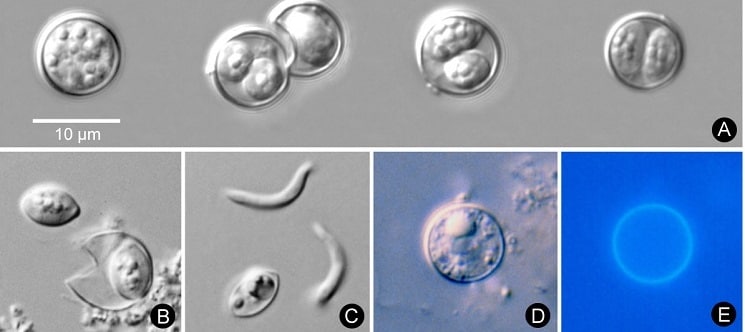Summary
Cyclosporiasis is an intestinal illness caused by the microscopic parasite Cyclospora cayetanensis. People can become infected with Cyclospora by consuming food or water contaminated with the parasite. People living or traveling in countries where cyclosporiasis is endemic may be at increased risk for infection. People will often experience watery diarrhea, nausea, fatigue or bloating. Most people who have healthy immune systems will recover without treatment.
Symptoms
Symptoms of cyclosporiasis begin an average of 7 days (range, 2 days to ≥2 weeks) after ingestion of sporulated oocysts (the infective form of the parasite).
Symptoms of cyclosporiasis may include the following:
- Watery diarrhea (most common)
- Loss of appetite
- Weight loss
- Cramping
- Bloating
- Increased gas
- Nausea
- Fatigue
Other symptoms that may occur but are less common include the following:
- Vomiting
- Low-grade fever
Causes
A one-celled parasite, Cyclospora cayetanensis, causes cyclospora infection. Person get it by drinking water or eating food that’s been contaminated by a person infected with the parasite. A person infected with cyclospora passes the parasite in stool. However, unlike some other foodborne parasites, Cyclospora doesn’t become infectious until days or weeks after it’s passed in a bowel movement. So it’s unlikely that you can get the infection directly from a person infected with cyclospora, such as a restaurant worker who doesn’t wash his or her hands adequately after using the toilet. Cyclospora infections have largely surfaced in people who traveled in countries in tropical and subtropical regions where cyclosporiasis commonly occurs.
Diagnosis and Testing
Cyclospora infection is diagnosed by examining stool specimens. Diagnosis can be difficult in part because even patients who are symptomatic might not shed enough oocysts in their stool to be readily detectable by laboratory examinations. Therefore, patients might need to submit several specimens collected on different days.The infection is often treated with trimethaprim-sulfamethaxozol, also known as Bactrim or co-trimoxazole, because traditional anti-protozoal drugs are not sufficient. To prevent transmission, food should be cooked thoroughly and drinking water from streams should be avoided.
| Formal binomial name of microbe: | Cyclospora cayetanensis |
| Gram stain (gram positive, gram negative or neither): | Gram negative |
| Is the microbe mobile or immobile? | Mobile |
|
Primary habitat? (Where is the organism
normally found or prefer to live?)
|
Food or water |
| Can the organism infect humans? | Yes |
| Can the organism infect other species? If so, which ones. | No |
| Documented cases of antimicrobial resistance? | The 2018 outbreak season is noteworthy for multiple outbreaks associated with different fresh produce items and the large number of reported cases. |
| Number of infections per year in the US | At least 285 people |
| Number of infections per year in the world | 16,264 people |
